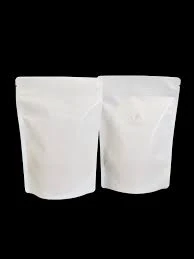- Afrikaans
- Albanian
- Amharic
- Arabic
- Armenian
- Azerbaijani
- Basque
- Belarusian
- Bengali
- Bosnian
- Bulgarian
- Catalan
- Cebuano
- chinese_simplified
- chinese_traditional
- Corsican
- Croatian
- Czech
- Danish
- Dutch
- English
- Esperanto
- Estonian
- Finnish
- French
- Frisian
- Galician
- Georgian
- German
- Greek
- Gujarati
- haitian_creole
- hausa
- hawaiian
- Hebrew
- Hindi
- Miao
- Hungarian
- Icelandic
- igbo
- Indonesian
- irish
- Italian
- Japanese
- Javanese
- Kannada
- kazakh
- Khmer
- Rwandese
- Korean
- Kurdish
- Kyrgyz
- Lao
- Latin
- Latvian
- Lithuanian
- Luxembourgish
- Macedonian
- Malgashi
- Malay
- Malayalam
- Maltese
- Maori
- Marathi
- Mongolian
- Myanmar
- Nepali
- Norwegian
- Norwegian
- Occitan
- Pashto
- Persian
- Polish
- Portuguese
- Punjabi
- Romanian
- Russian
- Samoan
- scottish-gaelic
- Serbian
- Sesotho
- Shona
- Sindhi
- Sinhala
- Slovak
- Slovenian
- Somali
- Spanish
- Sundanese
- Swahili
- Swedish
- Tagalog
- Tajik
- Tamil
- Tatar
- Telugu
- Thai
- Turkish
- Turkmen
- Ukrainian
- Urdu
- Uighur
- Uzbek
- Vietnamese
- Welsh
- Bantu
- Yiddish
- Yoruba
- Zulu
Comparing Chipboard and Cardboard for Versatile Packaging Solutions
Chipboard vs. Cardboard Understanding the Differences
In the realm of packaging and crafting materials, two names often appear chipboard and cardboard. While they may seem similar to the untrained eye, these materials serve different purposes and have unique properties. In this article, we will explore the distinctions between chipboard and cardboard, their applications, and when to use each material.
Composition
The primary difference between chipboard and cardboard is in their composition. Chipboard, also known as paperboard, is made from recycled paper and is a thick, rigid material. It is produced by compressing multiple layers of paper pulp into a dense sheet. This process gives chipboard its characteristic strength and durability. It typically has a smooth surface, which makes it ideal for printing and finishing, enabling high-quality graphics and designs.
On the other hand, cardboard refers to a broader category of materials that can include various forms of paperboard. The most common type of cardboard is corrugated cardboard, which features a fluted layer sandwiched between two flat layers. This design provides additional strength and makes it a preferred choice for shipping and packaging products. The fluted layer acts as insulation and protection, allowing cardboard to absorb shocks and resist crushing.
Properties
When comparing chipboard to cardboard, one can observe significant differences in their properties. Chipboard is heavier and denser than typical cardboard, making it a sturdy choice for structural applications. Its thickness can range from a few millimeters to several centimeters, making it excellent for products like book covers, game boards, and displays. Additionally, chipboard can be coated or laminated, enhancing its appearance and moisture resistance.
chipboard vs cardboard

Cardboard is generally lighter and more flexible. It is easier to cut and shape, making it suitable for various uses in crafts and packaging. The corrugated nature of many cardboard types lends itself well to stacking and shipping, as it can handle weight and pressure effectively. However, cardboard is typically less durable compared to chipboard and may not be the best choice for items that require long-term strength.
Applications
Both chipboard and cardboard find utility across various industries, but their applications tend to differ. Chipboard is widely used in manufacturing products that require sturdiness, such as packaging for cosmetics, electronics, and other fragile items. It is also popular in the arts and crafts community, serving as a base for various projects, from scrapbooking to model building.
Cardboard, particularly corrugated cardboard, is predominantly used for shipping and storage. It is the go-to material for boxes containing everything from groceries to electronics. The light weight of cardboard makes it more cost-effective for shipping, while its protective properties safeguard the contents during transit. Additionally, cardboard is commonly used for temporary structures and displays, thanks to its ease of customization.
Conclusion
In conclusion, both chipboard and cardboard have their unique advantages and disadvantages, making them suitable for different applications. Chipboard stands out for its strength and durability, making it ideal for structural purposes, while cardboard excels in shipping and versatility. Understanding these differences can help individuals and businesses make informed decisions when selecting materials for their projects or products. Whether you are crafting, shipping, or packaging, knowing when to use chipboard or cardboard can enhance the quality and functionality of your work.













